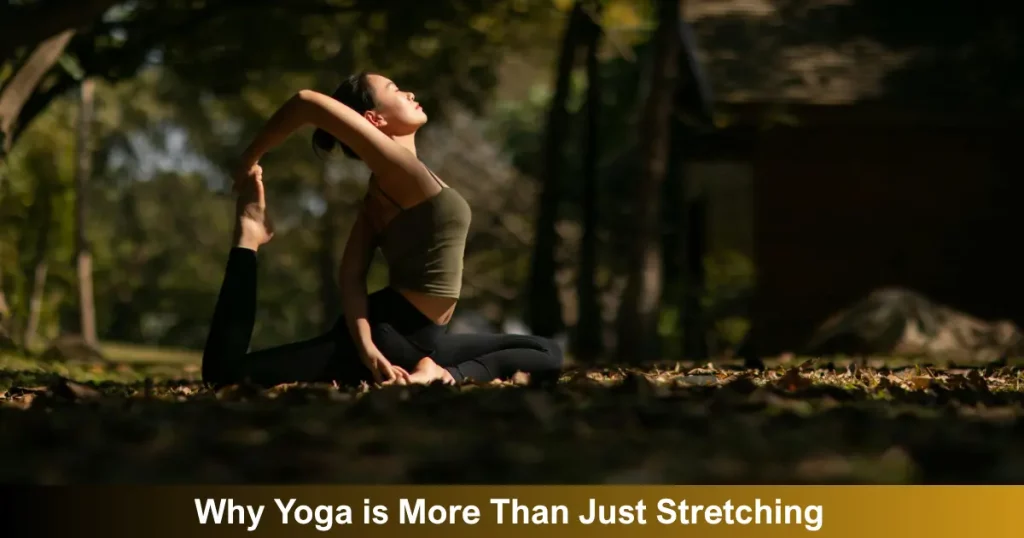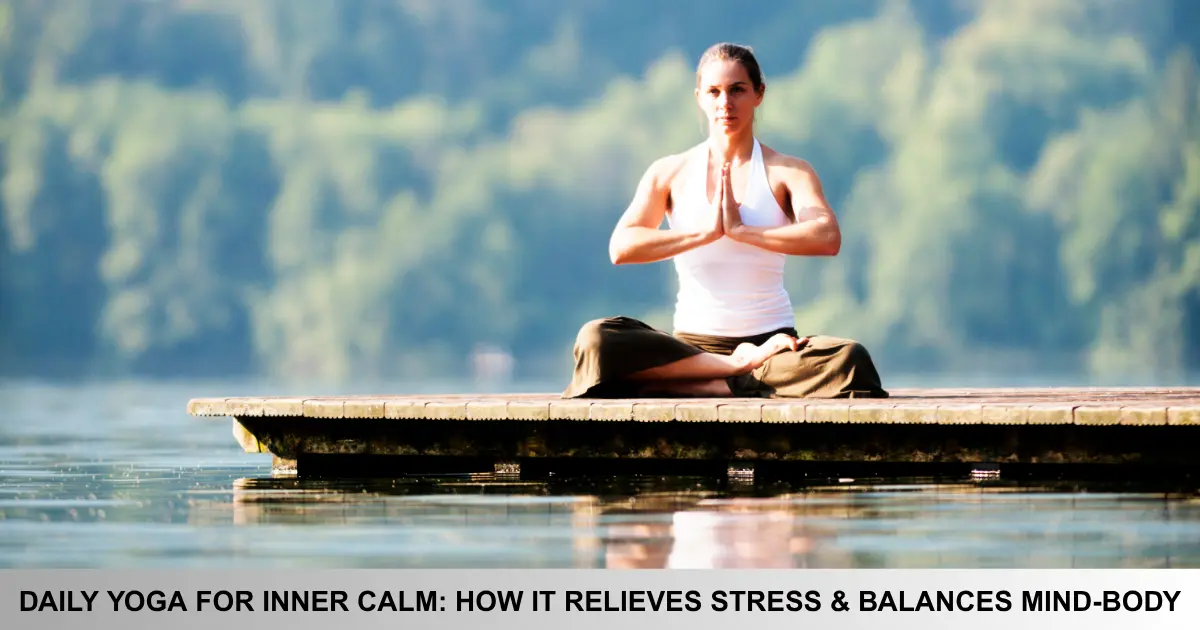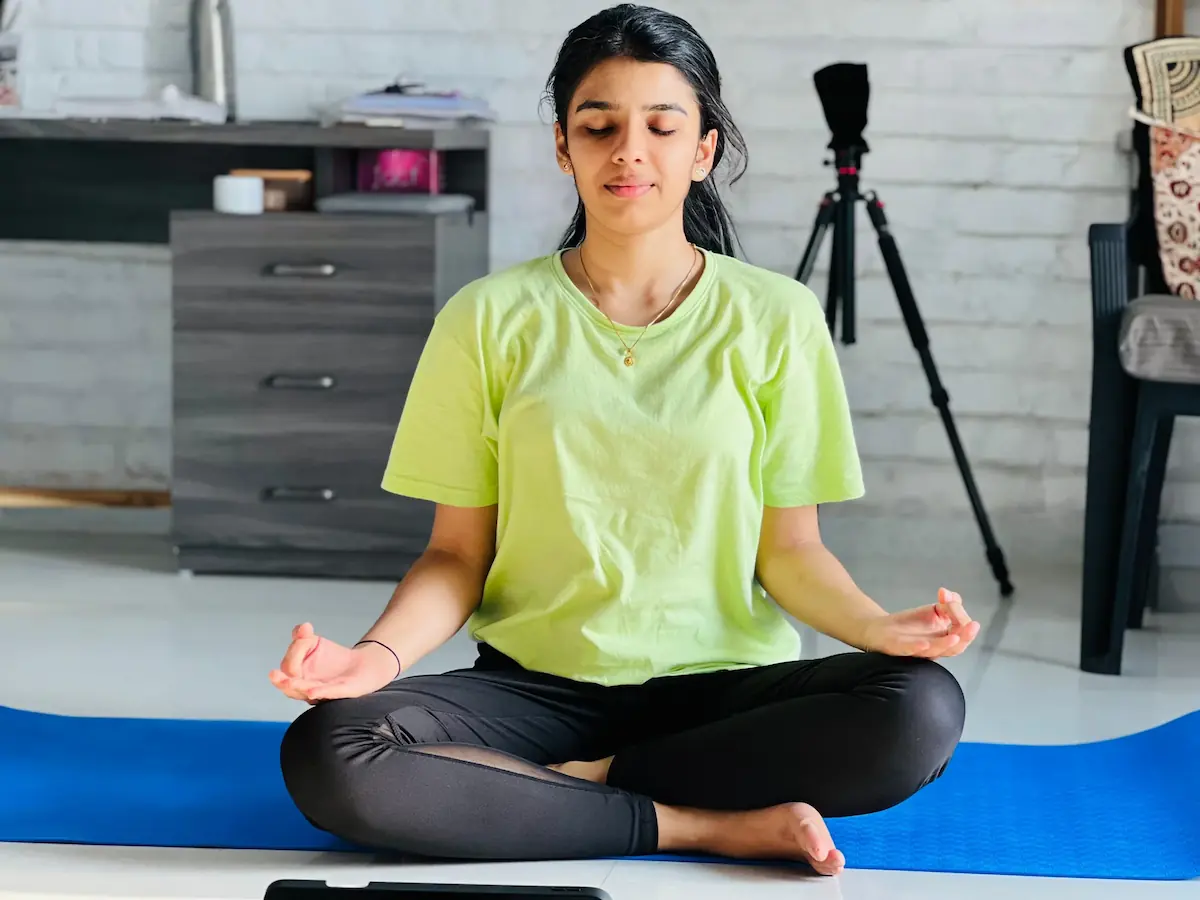Why Yoga is More Than Just Stretching
Yoga isn’t just about flexibility or trendy poses it’s a powerful, time-tested practice for mental clarity, emotional release, and spiritual grounding. Practicing yoga daily offers a gentle but transformative path to inner peace by aligning your breath, body, and mind.
Whether you’re a total beginner or just seeking calm in a hectic life, this guide will walk you through how daily yoga can help you feel more grounded, less reactive, and more in control of your emotions.

Step-by-Step Guide to Calm, Balance & Clarity
1. Soothe the Mind: Calm Your Thoughts
- What to do: Start with 5 minutes of seated meditation or breath-focused awareness.
- How it helps: According to Patanjali’s Yoga Sutras, “Yoga is the stilling of the mind’s fluctuations.” This quiets mental chatter, overthinking, and anxiety.
- Tip: Use simple breath awareness—inhale for 4 counts, exhale for 6—to anchor your mind.
2. Build Body Awareness: Strength with Sensitivity
- What to do: Practice foundational poses like Tadasana (Mountain Pose), Adho Mukha Svanasana (Downward Dog), and Bhujangasana (Cobra).
- How it helps: Improves posture, stability, and physical awareness. You learn to respect your body while gently increasing flexibility.
- Tip: Focus on how a pose feels—not how it looks.
3. Breathe to Heal: Pranayama for Balance
- What to do: Try Anulom Vilom (Alternate Nostril Breathing) or Nadi Shodhana.
- How it helps: Balances the nervous system, calms emotional swings, and deepens energy flow (prana).
- Tip: Practice breathing exercises in the morning or before bed for best results.
4. Accept the Flow: Balance Over Perfection
- What to do: Embrace progress over perfection—repeat a short sequence like Sun Salutations (Surya Namaskar) daily.
- How it helps: Builds emotional resilience and teaches you to remain steady amid life’s ups and downs.
- Wisdom: “Be steady in success and failure; that is yoga.” – Bhagavad Gita
5. Release Emotional Tension: Move & Let Go
- What to do: Practice hip-openers like Balasana (Child’s Pose), Eka Pada Rajakapotasana (Pigeon Pose), and gentle twists.
- How it helps: Tension is stored in muscles like the hips and jaw. Releasing these areas improves mental clarity and emotional release.
- Tip: Hold each pose for 5–10 breaths to feel the emotional shift.
6. Live Yoga Beyond the Mat: Integrate the Practice
- What to do: Practice the Yamas (moral disciplines) and Niyamas (self-purification) in daily life.
- How it helps: Promotes mindfulness, compassion, and intentional living—yoga becomes who you are, not just what you do.
- Examples:
- Ahimsa (Non-violence): Speak kindly to yourself
- Santosha (Contentment): Find peace in the present moment
- Svadhyaya (Self-study): Reflect regularly on your thoughts and actions
Beginner’s Routine: Start Your Yoga Journey Today
Time Needed: Just 15–20 Minutes a Day
- Seated Breathing (5 min) – Focus on your breath
- Gentle Flow (10 min) – Sun salutations and basic poses
- Closing Meditation (5 min) – Observe sensations, thoughts, and emotions
Read More: 7 Morning Yoga Asanas for Instant Energy
Frequently Asked Questions (FAQs)
Q1: Can beginners do yoga daily?
Yes! Start slow with 10–20 minutes of gentle practice. Consistency matters more than complexity.
Q2: What’s the best time to practice yoga?
Morning for energy and clarity; evening for stress relief and better sleep.
Q3: Can yoga help with anxiety and depression?
Absolutely. Studies show regular yoga improves mood, reduces cortisol, and boosts emotional resilience.
Q4: Do I need to be flexible to start yoga?
No. Flexibility is a result of yoga, not a requirement. All bodies are welcome.
Q5: What if I miss a day?
That’s okay. Just return the next day without guilt. Yoga is about balance, not pressure.
Final Thoughts: Let Yoga Work Its Quiet Magic
Daily yoga isn’t about achieving the perfect pose it’s about building a relationship with your breath, your body, and your inner world. With each session, you’re not just stretching muscles you’re calming your thoughts, releasing old tension, and finding a little more peace.
“Do your duty without attachment to the outcome. This is true yoga.” – Bhagavad Gita 2.47
Stay consistent, stay kind to yourself, and let the journey unfold one breath at a time.

